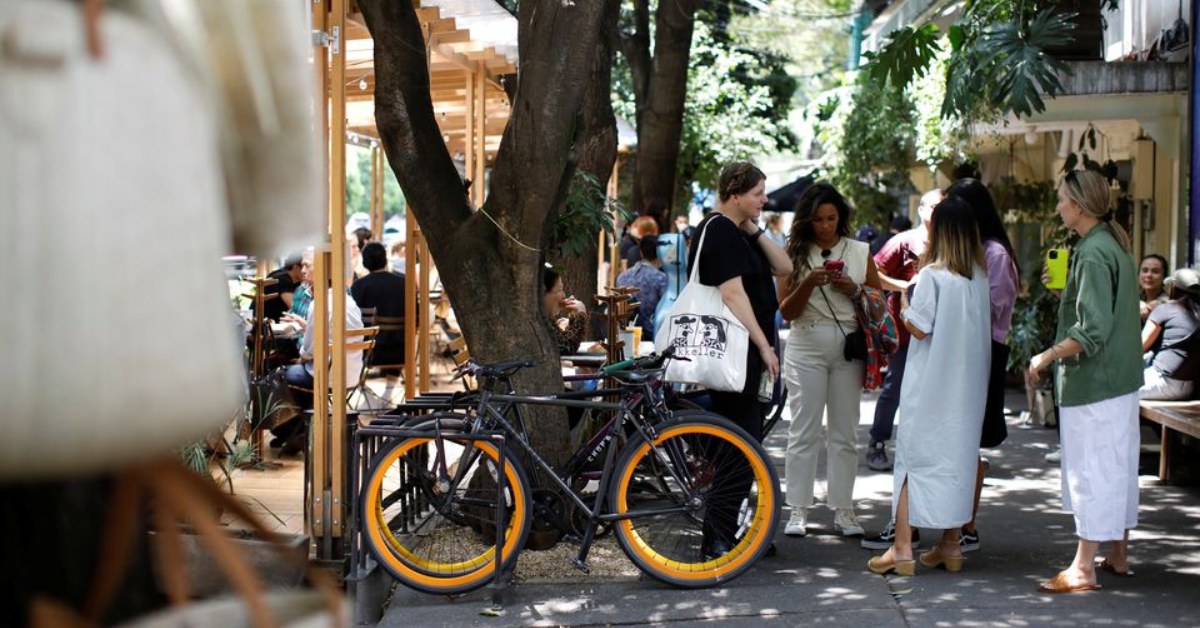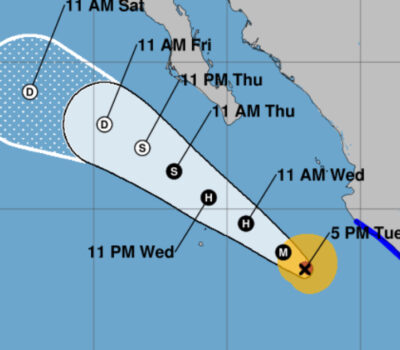MEXICO CITY, Sept 13 (Reuters) – In a trendy part of Mexico City, in a park surrounded by hipster coffeeshops and restaurants, stands a figure dressed in white with hands in prayer like a Catholic statuette: the so-called patron saint against gentrification.
Sandra Valenzuela, a Mexican activist, created the statue to rally neighbors against what she regards as a rising threat to her community and others in the Mexican capital.
A wave of international visitors predominantly from the United States has poured into Mexico City’s cafes, parks and AirBnbs as they work untethered from daily office commutes by the COVID-19 pandemic.
Nearly two million foreigners touched down at the Mexico City International Airport in the first half of 2022, inching toward the record 2.5 million arrivals in the first half of 2019. Meanwhile, demand for short-term rentals across Mexico City surged 44% over the same period, according to AirDNA, a market research company that analyzes online rental listings.
Marko Ayling, a writer and content creator who lives in Mexico City, strolled through the coveted Condesa neighborhood, where “For rent” ads alternate with signs for chic cafes and plant-based eateries.
“There’s obviously a lot of advantages if you can earn in dollars and spend in pesos,” said Ayling, originally from San Diego, California. “You’re essentially tripling your income.”
But housing activists and some researchers say the digital nomad influx exacerbates inflation and transforms neighborhoods into exclusive expatriate bubbles, in a city well-known for stark divides between rich and poor.
RISING PRICES
Residents in lux neighborhoods like Condesa and Roma complain that long-time residents are getting pushed out as homeowners increasingly opt to rent their homes through short-term rental platforms like AirBnb, where they can earn 25,000 Mexican pesos ($1,261) per month, said Rafael Guarneros, president of a Condesa neighborhood association.
The gap between American and Mexican salaries means even affluent Mexico City residents can get priced out, in a city that is already home to wide wealth disparities. According to Mexico’s statistics agency, the top 10% of Mexico City households earned more than 13 times as much as the bottom 10% of households in 2020.
Average daily rates for short-term rentals across Mexico City jumped 27% to $93 in August 2022, compared to August 2019, AirDNA data show. The Mexican government stopped publishing average rental rates in 2018, but a study by real estate website Lamudi found Mexico City rents dropped slightly between December 2020 and December 2021. However, there has been little research on this subject since the COVID-19 induced wave of remote work.
On an August afternoon, Juan Coronado slid into a leafy restaurant booth before opening his laptop to get work done while he dined.
Coronado, an architect and interior designer who lives between Los Angeles and Mexico City, said he understands locals are resentful.
“I don’t live for free, I help the economy,” he said. “But for them… my presence here doesn’t help the fact that rents go up.”
Although Mexico City landlords can only raise rents by up to 10% per year by law, the rules are rarely enforced. The short-term rental market has no such restriction.
NEIGHBORHOOD CHANGE
Beyond rising prices, residents cite less tangible changes that make their neighborhoods feel more welcoming to foreigners than locals.
“There is no way for people to sleep peacefully,” said Quetzal Castro, a resident of Condesa, which she says has become a center of noisy nightlife, pushing friends to leave.
Digital nomads – as people who travel while working remotely are known – impact the local economy differently than traditional visitors, said David Wachsmuth, a McGill University professor who researches gentrification.
More likely to settle in residential neighborhoods, they spend at local businesses, Wachsmuth said, but also create demand for services with little benefit to long-term residents: “Grocery stores turn into restaurants.”
While digital nomads enjoy a lifestyle out of reach to most Mexico City workers, who earn 53 Mexican pesos ($2.67) per hour on average, Ayling from San Diego pointed to a silver-lining of foreigners’ love for the capital city.
“It’s not just narcos and violence and poverty,” Ayling said. “There’s beautiful sides of this country and they’re celebrating that too.”
($1 = 19.8210 Mexican pesos)
MEXICO CITY, Sept 13 (Reuters) - In a trendy part of Mexico City, in a park surrounded by hipster coffeeshops and restaurants, stands a figure . . .












